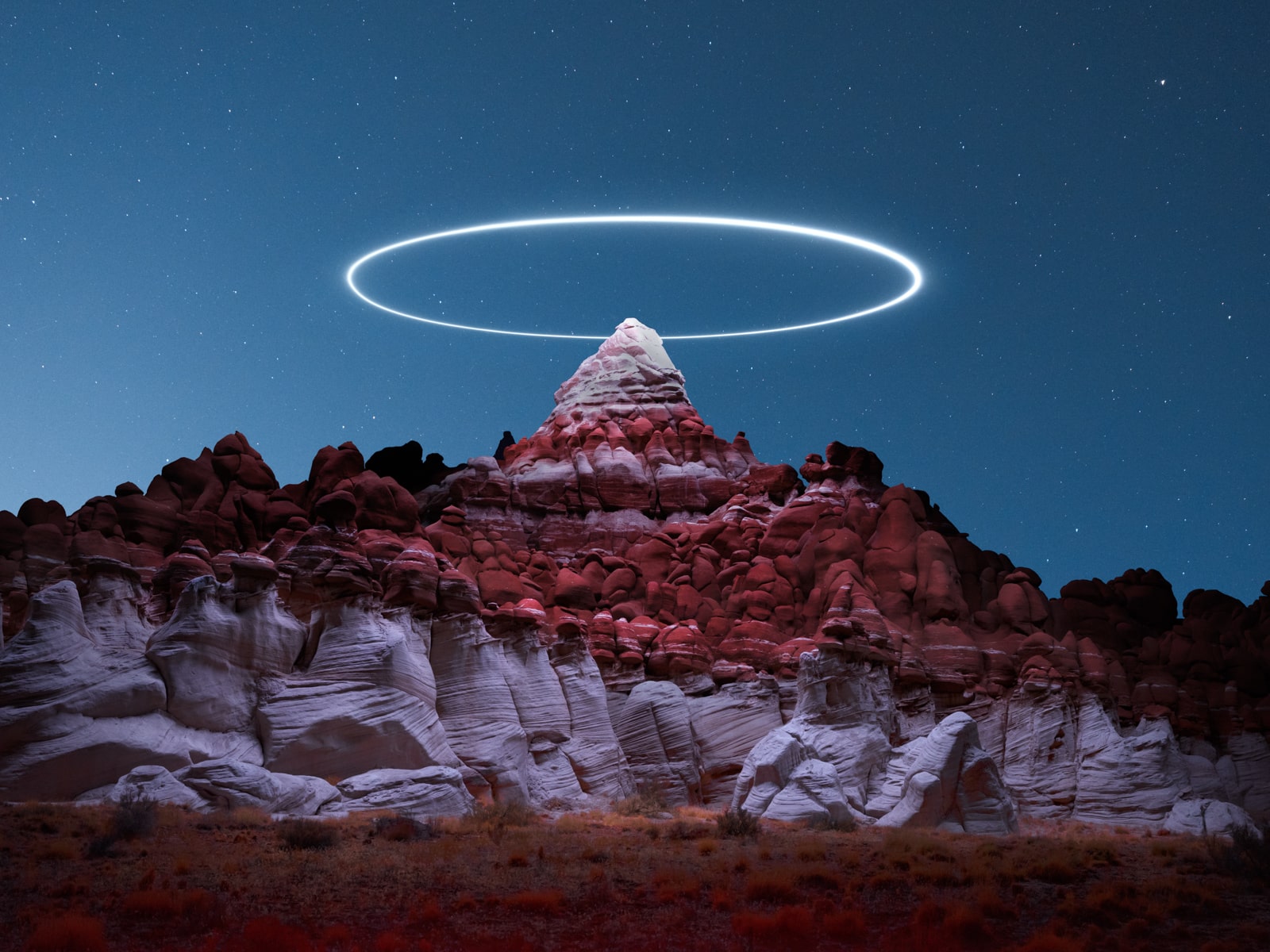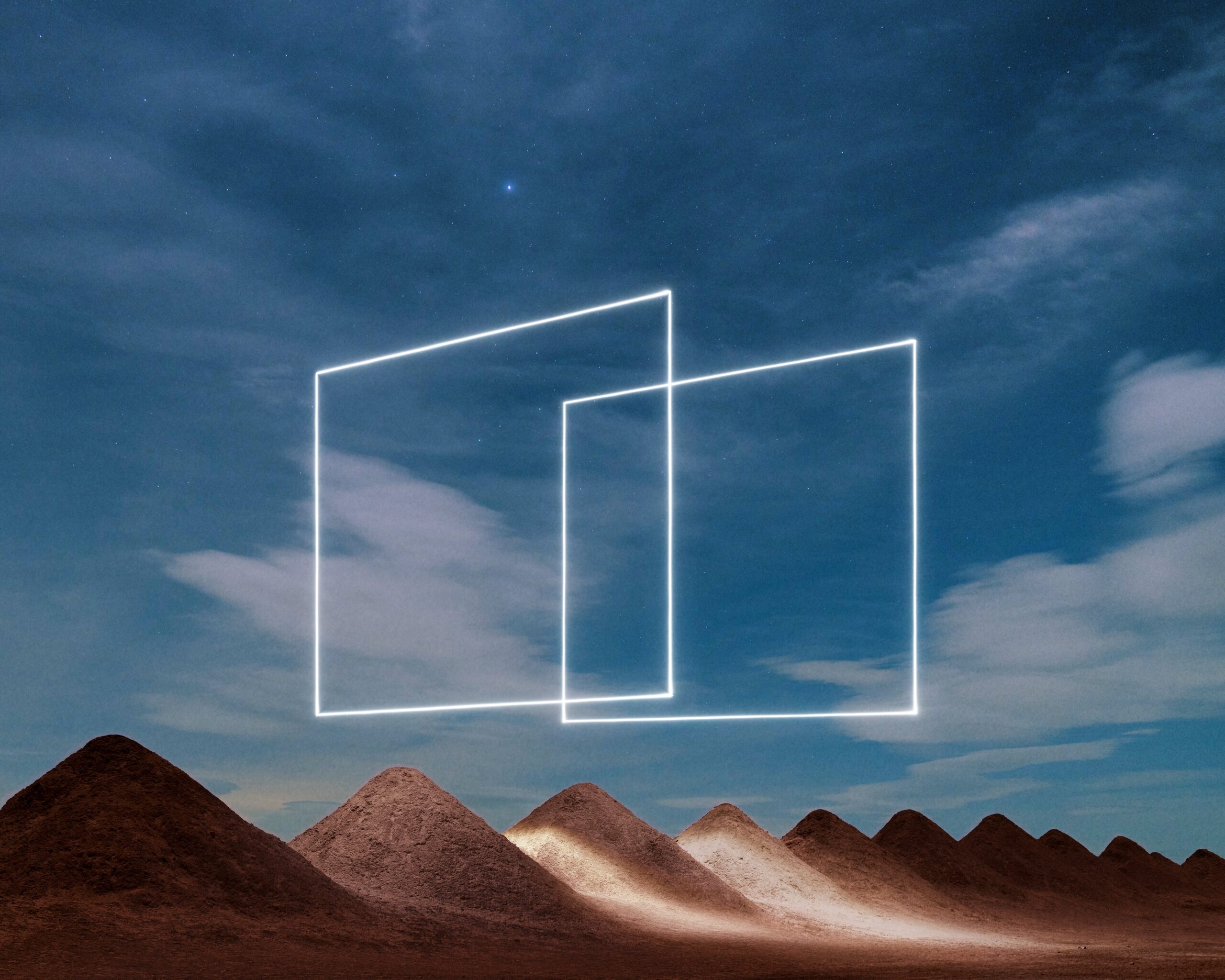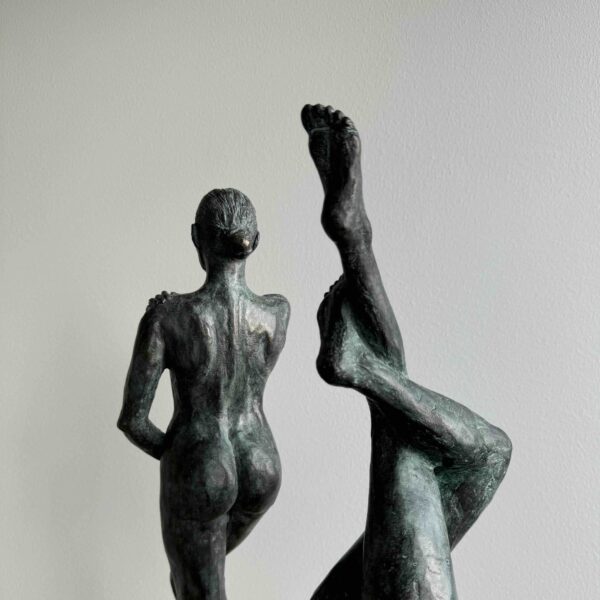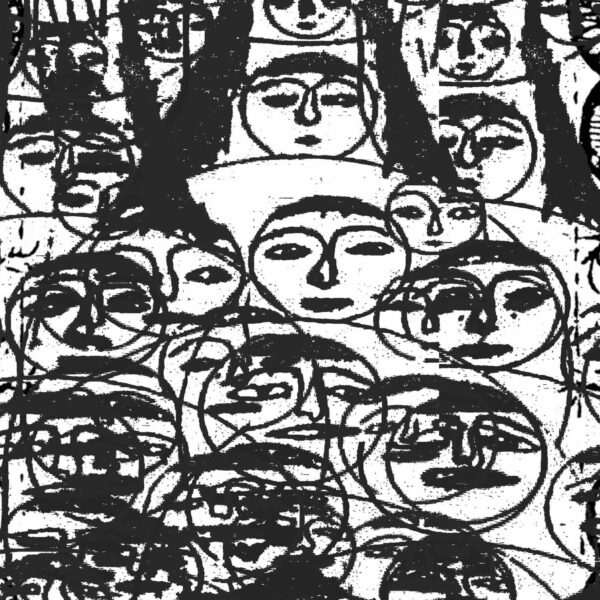Reuben Wu on Reframing the Earth
Reuben Wu is a multidisciplinary artist who uses technology and the concept of time and space to help tell compelling stories about the vast world that we inhabit. Not only is he a National Geographic Photographer, but he is founding member of the band Ladytron, a Global Brand Ambassador for Phase One, and a leading artist in the cryptoart space. His work belongs in the permanent collections of the Guggenheim Museum, The Metropolitan Museum of Art, and the MoMA. In this interview, we discuss Wu’s series Aeorglyphs, his rockstar roots, and his Earthly art. Please note, this conversation has been edited for brevity and clarity.

Q: How did you initially get into photography?
REUBEN WU: Before I was a photographer, I was a professional musician in a band. It started as a kind of side project or hobby, but as we became more and more successful, we got signed by a label. I was working as an industrial designer at the time and taking holidays to go on tour. We called ourselves Ladytron, and began releasing records in the early 2000s. We actually started getting really successful and traveled all over the world. We toured the States, Canada, South America, Europe, Asia, Australia, Russia – all over the place. The success of Ladytron required me to go full time with music, and I eventually left my industrial design job. We released six albums, traveled all over the world, and because the travel went hand in hand with releasing music, it had the fortuitous effect of introducing me to photography. It started as a way of documenting my travels and my surroundings, like a tour diary.
Q: How did your casual travel diary photography escalate into becoming your premiere art form?
REUBEN WU: As we continued to travel extensively, I began to experiment more and more with my photography– using different cameras, different film, different lenses. When everyone was using DSLRs, I was one of the very few who chose to shoot on film. I started out on digital but got into film because I just loved how weird and kind of ritualistic it was in terms of setting up your camera, loading film, sending the film off, and then scanning negatives. I started thinking about photography as a craft, more than simply photos. I felt that doing photography tapped into the visual art side of me that I felt I needed to revisit. In a way, photography became my new art outlet. I was posting a lot of this stuff online but kind of anonymously because I felt that I needed to keep the two worlds separate – photography and music. It was really great, it was quite refreshing doing it this way. The band then got to a point, about 10 years down the line, where we decided to take a break. One side of me was thinking, do I go into music and do a solo project? Or do I pursue this dream of mine, this hobby of mine, this passion of mine, and to try and make a living out of photography? I’m not a Plan B kind of guy. So music eventually went out of the window. I realized that my passion to continue music alone wasn’t there, but my passion for photography was.

Q: How did you find your way from that decision to shooting commercial photography?
REUBEN WU: I just continued shooting. I embraced digital photography with all of the new technology that came with it, like video and time lapse. At a point, film photography became limiting to me. It felt like, “Oh, just because this photo was taken on film, it’s got to be good.” Which was kind of a false assumption in my head. Photography is always about the picture. It’s not about the camera, it’s not about the film, it’s not about the process, it’s not even about the journey. When it comes down to it, and what the viewer sees, it’s about the picture– and whether the picture moves you. So I decided to go to digital. For the next few years it was a pretty rocky road of trying to find work and trying to make a living. I had just moved to the States and basically started with nothing. I had a network of friends who I met while I was in the band. Fortunately, some of them were doing cool stuff in advertising.
You have this light coming from a source that does not make sense. So in a way, these images don’t make sense. When you look at it, you kind of start asking questions about how it’s possible.
Q: What was your first big break in the commercial photography world?
REUBEN WU: My first break was being asked to direct and do the music for this commercial spot for GE. That was my first break into commercial photography. It started very slowly, but as I got more involved, I started to get more and more work in client-based photography– so much so that I started getting hired by clients like Google, Apple, and Samsung. My commercial work was going really well. For my personal work, I had started experimenting with new technology like drones, artificial lighting in remote landscapes, and really trying to approach landscape photography in a way that felt new and felt original.
Q: Can you talk about the melding of your commercial work and your more experimental personal projects? What led you to where you are now?
REUBEN WU: I started by trying to create my own world using lighting in these remote natural environments, where you do not expect that kind of lighting. The two things were kind of quite a jarring juxtaposition, where you show something which is a fairly familiar looking landscape, you’re on Earth, you can recognize things about it, but in a completely unfamiliar light. You have this light coming from a source that does not make sense. So in a way, these images don’t make sense. When you look at it, you kind of start asking questions about how it’s possible. I’ve really been approaching my career thus far as client work, which has become very much inspired by my personal work. It’s almost like this cycle where I make my personal work and clients reach out to me asking, “can you make this stuff for us?” I’m hired to do these jobs, which then allows me to create even more personal work. Over the years it’s been very transformative for me in both my client work and my personal work. So that’s kind of the long story of where I’m up to right now.
Q: Your series Aeroglyphs in particular has really captivated a massive audience online. What was the origin of that series?
REUBEN WU: Aeroglyphs was kind of an accidental discovery from my drone light photography. I first started doing drone light photography where the drone was not in shot. The drone was always out of frame, or I removed the actual drone just leaving the light. I wanted this idea of this kind of unearthly light with a source that you couldn’t see. While I was creating these pieces, I could see the flight path of the drone through the long exposures. I could see that these lines created by the drones were actually really, really interesting. As an artist, I need to have some kind of an intervention with my subject matter. I realized that this was my way of an intervention, this was my way of interacting with my subject matter, kind of like the Land Art movement of the 1960s. You have artists like Robert Smithson and James Turrell creating all these installations out in the desert, but what I’m doing is creating these environments without touching or altering the landscape.

The idea with Aeroglyphs was to create these very clean geometric shapes and lines above the obscure and chaotic landscapes underneath. It creates a tension.
Q: Creating art without altering the natural landscape is a novel concept. Can you tell me a bit more about that? How is that possible?
REUBEN WU: Yes, I go back to the word of this idea of Zero Trace where I’m able to create these interventions without altering, without touching the landscape. It’s kind of like this new form of Land Art. I started using the drone as this kind of flying light beam where the navigation systems enable me to create these geometric shapes in the air. So the circles that you see, that’s actually a semiautomatic maneuver that the drone does, where it orbits around the subject matter. I’m using it to paint a light circle around my subject matter. The idea with Aeroglyphs was to create these very clean geometric shapes and lines above the obscure and chaotic landscapes underneath. It creates a tension. This has been an aesthetic that I’ve been experimenting a lot with. Not just using drones, but also using other methods of light painting. It’s definitely in alignment with my values when I’m in these places. It has been a really cool aesthetic to work with, and it’s something that opens up opportunities for many different things.
Q: The reaction to your Aeroglyphs series has been overwhelmingly positive. Do you have any insight as to why this specific series connects to so many people?
REUBEN WU: A lot of people think, “Oh, this work looks like a rendering.” I think one of the reasons why people in the NFT space connected with my work so early on is that it kind of didn’t look like photography! It could have just been rendered. It almost looks 3D. People are always asking, “Oh, what software did you make this on?” I’m like, “Oh, with my camera.” I really like the fact that this aesthetic and these images transcend their own medium. Obviously my journey of going out to these places and making this stuff in the environment is very much a part of the story as well. I just think it’s cool that people don’t think of photography when they see it, they just connect to the image. People always speak of my work as otherworldly. “Oh, it looks like an alien world. It looks like Mars, it looks like a different planet.” What I’m actually trying to do is to show people that this is Planet Earth. This is our home, just shown in the way that you’ve never seen before. If you just look under your nose, you can find these places. So far, we’ve not seen a Mars rover send back images of anything cooler than what we have on Earth. What I’m trying to do is to show the beauty of the Earth essentially. It’s very much a core value of my photography, but just trying to show it in a completely new way, and to remind ourselves that this is our only home.


